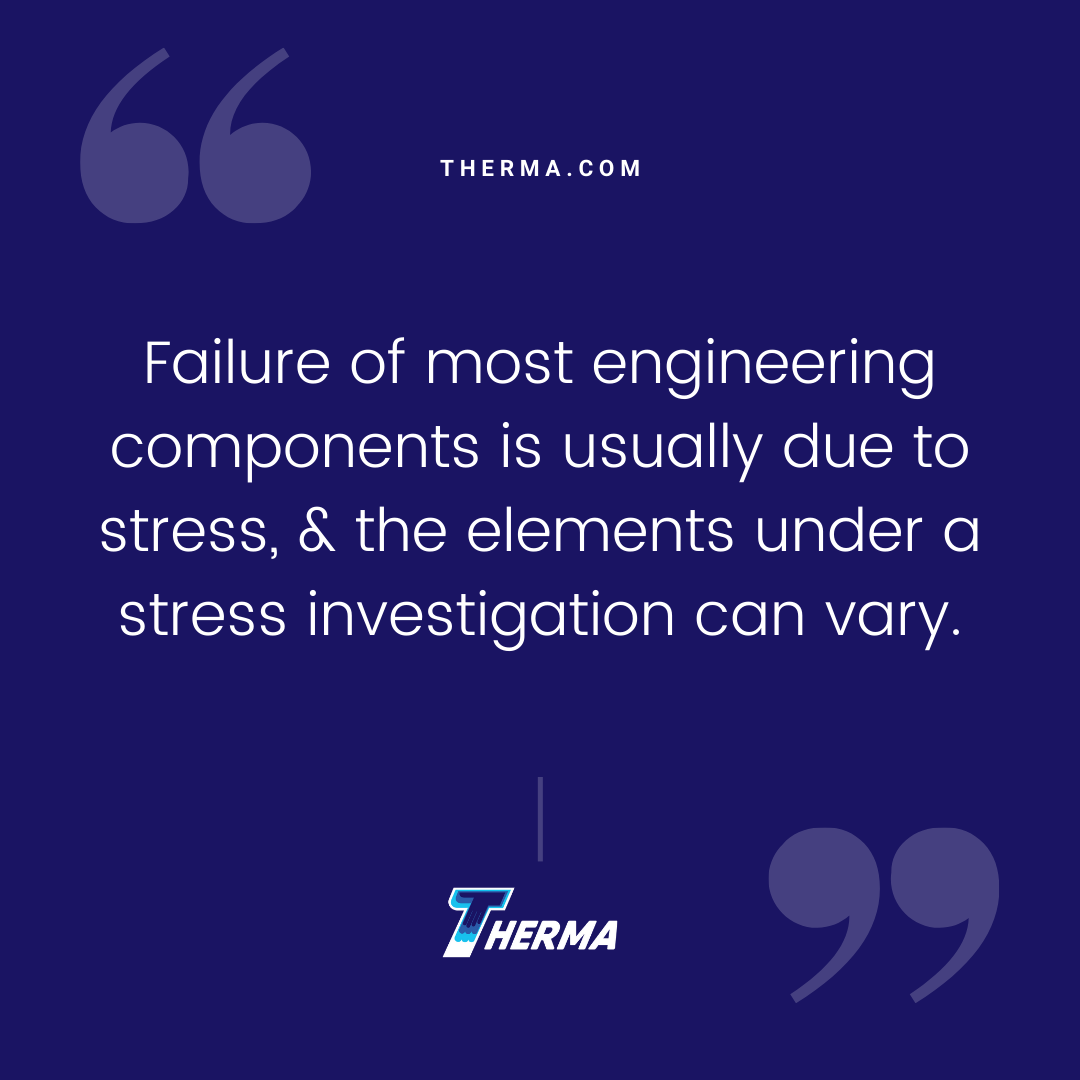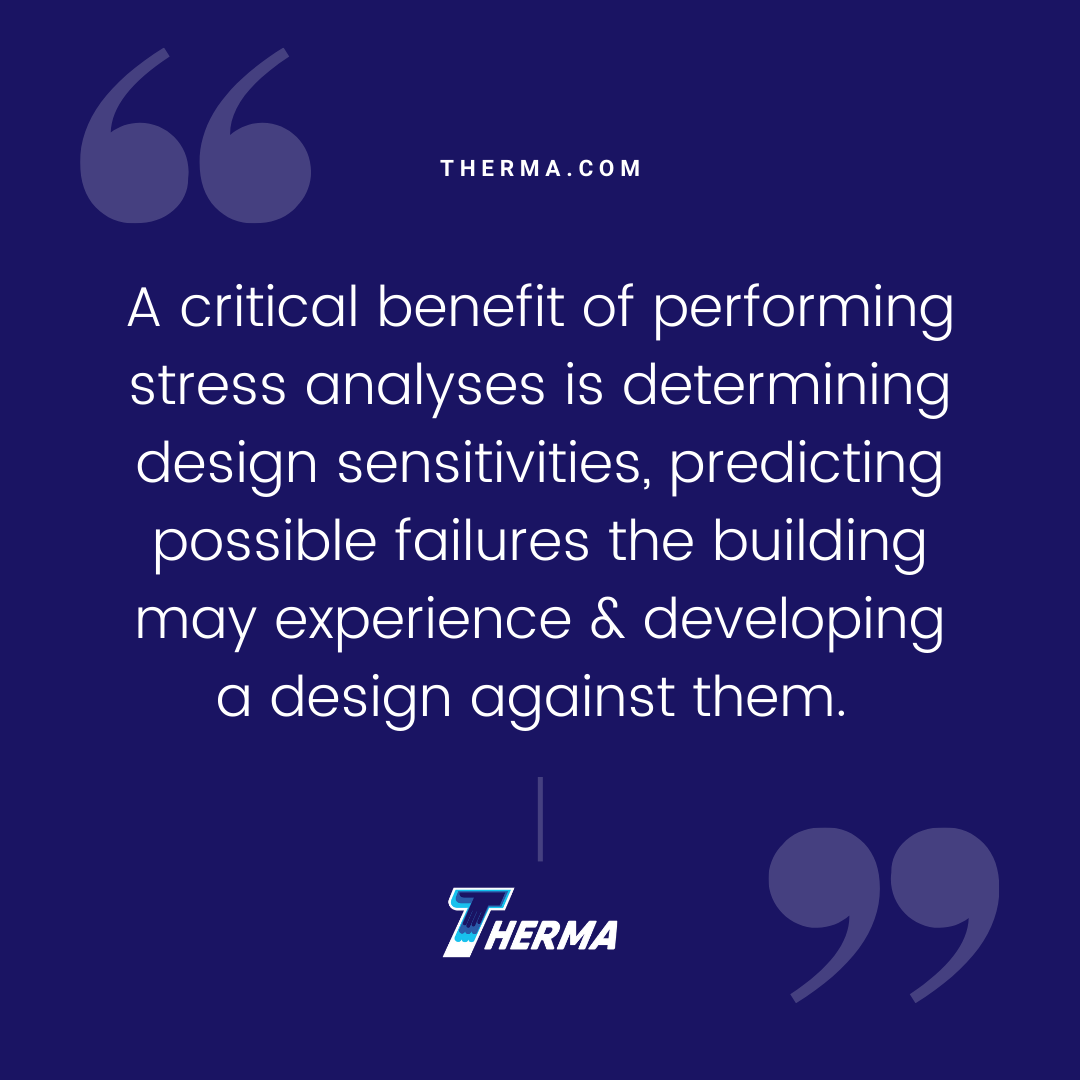by Trevillian Highter
An important part of engineering is stress analysis. Failure of most engineering components is usually due to stress, and the elements under a stress investigation can vary. Performing a stress-strain analysis of buildings is essential during the design and construction of structures to mitigate any risks.
What Is a Stress Analysis?
A stress analysis, sometimes referred to as a stress-strain analysis, is a process whereby engineers test load consumptions in buildings to ensure structural reliability and provide solutions to different strains. For example, during the design of a building, the calculation of shear force and bending distributions in beams would be presented in a stress analysis.
The basic function of any structure is to carry loads and transmit forces. Applying force to an object is known as loading. In a steel-framed multi-story building, the steel frame supports loads such as the roof, floors and external walls. The steel frame transmits these loads to the foundation of the building on where it rests. Stress analysis determines how applied forces or loads lead to internal stress and associated strains in buildings.
Importance of Stress Analyses
A critical benefit of performing stress analyses is determining design sensitivities, predicting possible failures the building may experience and developing a design against them. Stress analysis can also be used in existing buildings to evaluate weak or deteriorated materials during retrofits and remodeling.

How To Conduct a Stress Analysis
Stress analysis plays a crucial part in the design process of new building construction and retrofits. Here’s how it works:
1. Determine Structure Specification
First, the engineer is presented with a specification for a structure to fulfill a certain role such as an office building. Further decisions are required as to the materials, such as steel, reinforced concrete and more.
2. Calculate Loads
Once the designer has decided on a specific system, the loads are calculated and analyzed for stress.
3. Check for Safety and Serviceability
Once the external and internal forces or loads are calculated, the internal stress distributions and the strains are obtained from the force or loads calculation. The structure is then checked for safety and serviceability to certify that it will resist loads without danger of collapse and excessive deformation.
A stress analysis may show that construction is unsafe and unserviceable, under-designed, or uneconomic. In this case, modifications must be made and analyses are repeated.

Stress Analysis Methods
Stress analysis may be performed using various methods. These methods include computational simulation, experimental testing techniques, analytic mathematical modeling, or a combination of methods. Structural modeling is a standard method that predicts internal forces, stresses and deformations. It is based on idealizing the structure and using simple assumptions on loads, boundary conditions and geometry. Most often, the calculation of stress is fairly straightforward. However, more complex stress analyses are required for complex components with multiple stresses or loads and varying material properties.
Benefits of Working With Engineering Experts
There are key advantages to working with engineering experts like Therma to conduct stress analysis. Engineers find the best design options early in development and ensure that a building or structure performs satisfactorily under stress, enhancing reliability while reducing cost. Contact us today to see how we can help.
Trevillian Highter has a master’s degree in computer science. Her experience includes analytical research.
Sources
Dr. T.H.G. Megson, Second Edition – Structural and Stress Analysis,
SlideShare – Stress Analysis Methods
NASA – Structural Stress Analysis
ScienceDirect – Stress Analysis
ICE Virtual Library – Stress Analysis of Buildings under Horizontal Load. Part 1: Basic behaviour – deformations. Abstract.
IOWA State University Center for Nondestructive Evaluation – Physics of Nondestructive Evaluation-Materials and Processes







